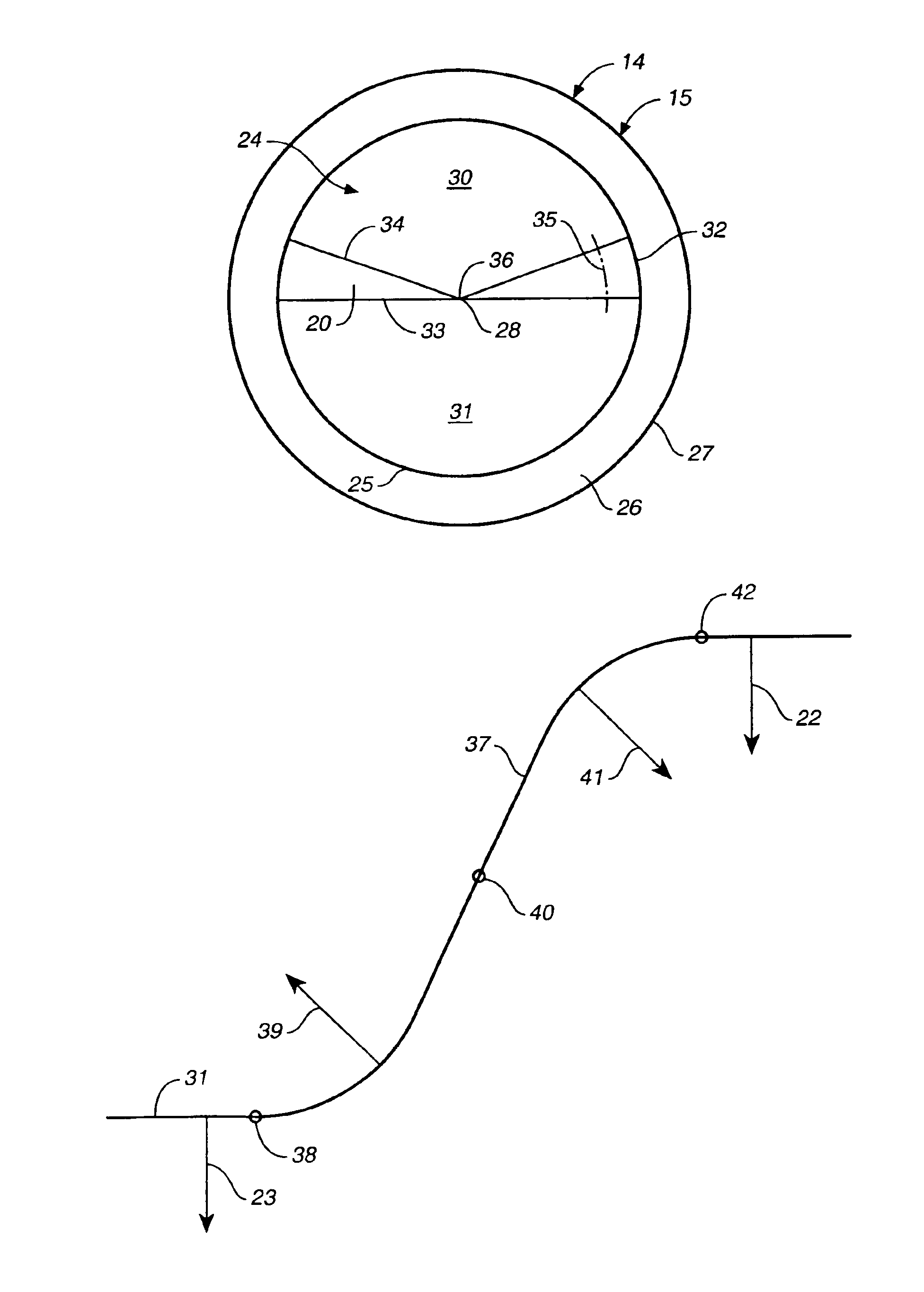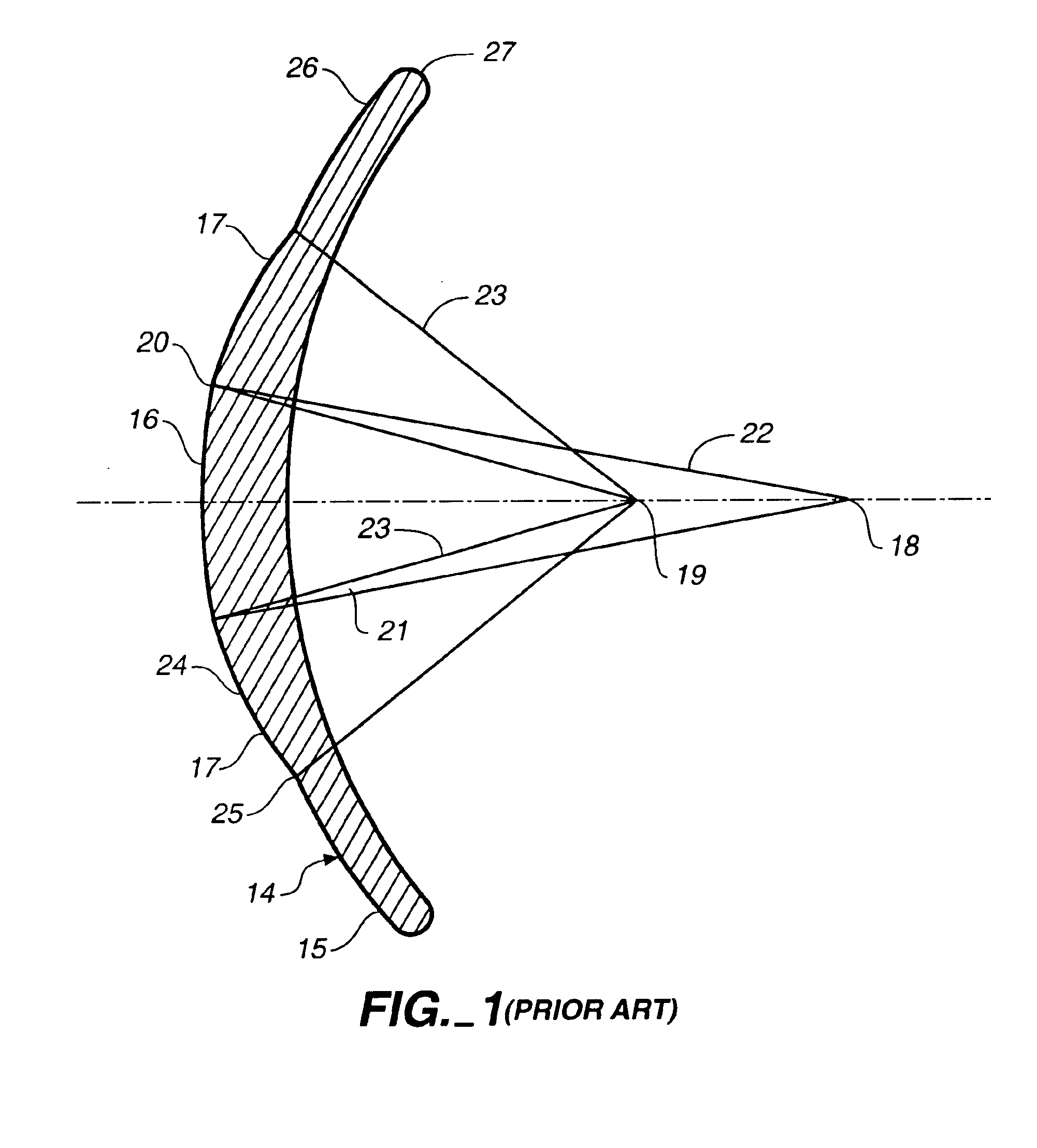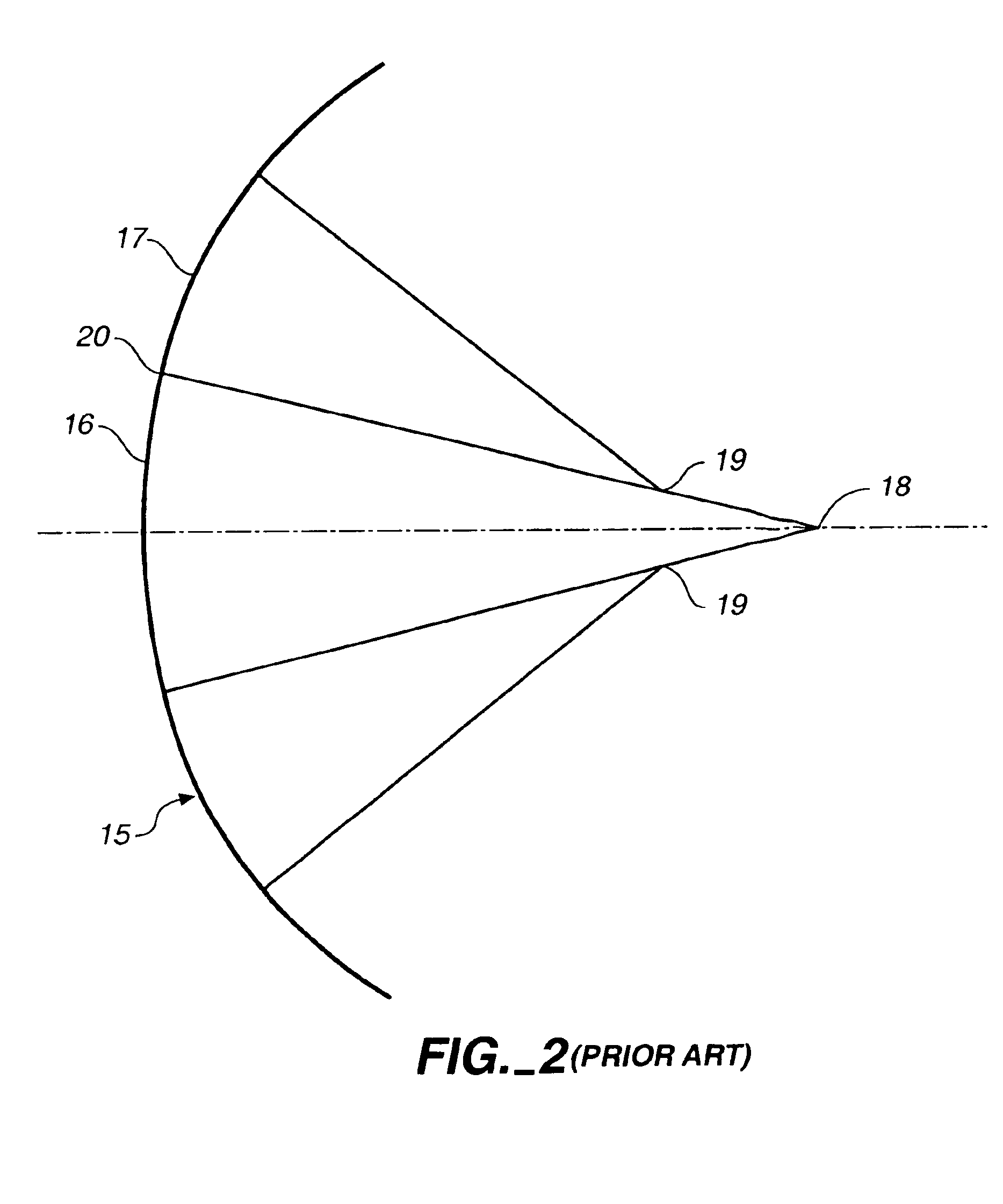Contact lens with transition
a contact lens and transition technology, applied in the field of bifocal contact lenses, can solve the problems of wearer discomfort, disturbing image jump, general poor tolerance, inadequate lens movement, etc., and achieve the effect of less visibl
- Summary
- Abstract
- Description
- Claims
- Application Information
AI Technical Summary
Benefits of technology
Problems solved by technology
Method used
Image
Examples
Embodiment Construction
FIG. 6 is a plan view of a front surface 15 of a bifocal contact lens 14, in accordance with the invention. Front surface 15 is comprised of bifocal area 24 that is limited by bifocal perimeter 25, and surrounded by peripheral zone 26 that extends to edge perimeter 27. Bifocal area 24 is comprised of an upper zone 30 of an optical power for distance vision and a lower zone 31 of an optical power for near vision, which are connected by transition 20. Transition 20 is comprised of a midpoint 28, a periphery 32, a lower boundary 33 with lower zone 31 and an upper boundary 34 with upper zone 30. Lower boundary 33 follows a straight line in a horizontal orientation and upper boundary 34 follows two straight lines that are angled upward on each side from transition midpoint 28 to transition periphery 32.
A sigmoidal-curve path 35 is represented by an arc that is concentric with midpoint 28 of transition 20. Midpoint 28 of transition 20 coincides with a geometric center 36 of lens 14.
FIG. 7...
PUM
 Login to View More
Login to View More Abstract
Description
Claims
Application Information
 Login to View More
Login to View More - R&D
- Intellectual Property
- Life Sciences
- Materials
- Tech Scout
- Unparalleled Data Quality
- Higher Quality Content
- 60% Fewer Hallucinations
Browse by: Latest US Patents, China's latest patents, Technical Efficacy Thesaurus, Application Domain, Technology Topic, Popular Technical Reports.
© 2025 PatSnap. All rights reserved.Legal|Privacy policy|Modern Slavery Act Transparency Statement|Sitemap|About US| Contact US: help@patsnap.com



